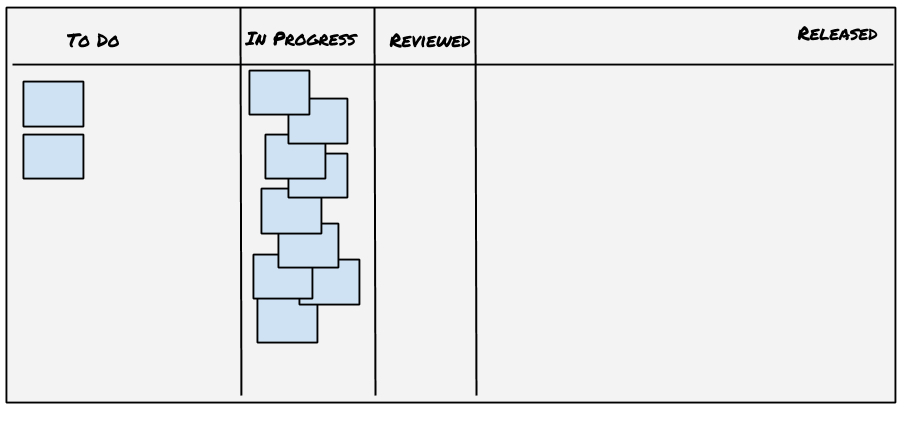Starting vs. Finishing
What’s more important, starting or finishing? Being done is great, but you can’t finish something you haven’t started. To me, finishing is more important. Because if you don’t finish all you’ve done is waste your time (modulo any learning along the way). Of course, to finish you need to define what “finishing” means. This is critical because, especially in development, while finishing does NOT always mean delivered, it usually does, and that’s a place to start with the definition. You always need to be explicit about what done means. If it doesn’t mean delivered to customers then you need to be even more explicit. And clear that done means you don’t already know there’s more work you need to.
As I’ve said, finishing is more important. However, since you can’t finish what you don’t start, that means it’s at least as important, right? And if you want to finish as much as possible, it stands to reason that you want to start as many things as possible so you have something to finish, right? Wrong.
What’s why managing your Work in Progress (WIP) is so important. Contrary to expectations, the less you’re working on, the more you can finish. There are lots of reasons for this. The first is time lost to context switching. As I noted before, every context switch can take up to 20% of your time. It doesn’t take many context switches to run out of working time. Second, the more things you’re working on, the more opportunities you have for interruption. When you’re working on one thing there’s one group of people who will be interrupting you. It might be as simple as needing a status update, or it could be as complicated as a change in dates and requirements. Third, is increased cognitive load. It’s related to context switching, but even if you’re not switching, you’re carrying around all that extra context, which means you have less “space” to focus on what you’re currently working on.
Add to that a very human tendency to want to start things and you can easily end up with lots of WIP. I’m very guilty of this. It’s often easier and more fun to start a new task. Especially if it’s a completely new thing. Greenfield development is easier and lots of fun. You start out with learning and exploring and you don’t need to worry (too much) about what’s been done before. And even if you’re not doing greenfield work, you still get to learn and explore. Starting out is generally much less constrained. You have more freedom. Conversely, finishing something is all about constraints. Have you met all the constraints? Have you done all of the niggly lit bits that are needed. Have you dug deep enough to finish up and get to done?
Sometimes of tools don’t help. If you’re using a Scrum-like or Kanban-like process you want to see motion on the board. The easiest thing to do is move something from not started to in-progress. You get motion. The counter for time in state goes down. The more things you have on the board at any given time the more things can move around. You get the appearance of progress.
But it’s not real progress. Real progress is moving things to done. Getting them off the board. That frees up time, capacity, and cognitive load. It reduces context switches. It improves flow. It gives you more real progress.
So next time you get to a point where you have an opportunity to either start working on something new or helping someone else move something to done, consider trying out helping someone on the team get to done. You might be surprised at the overall result.

